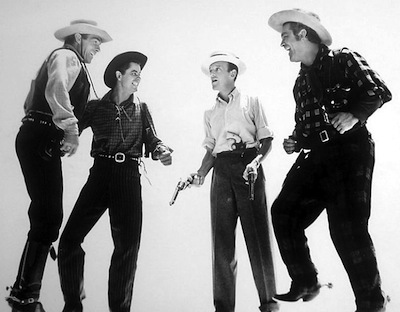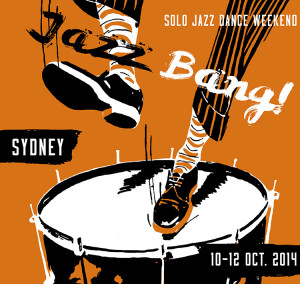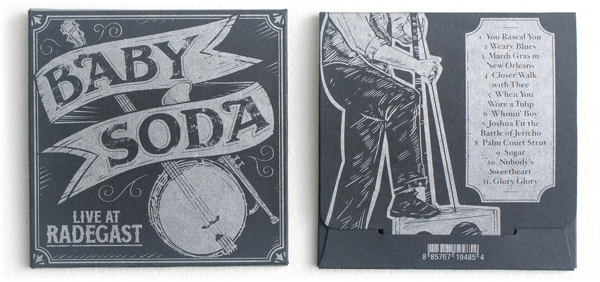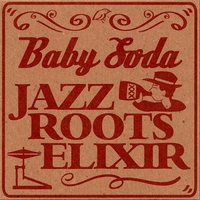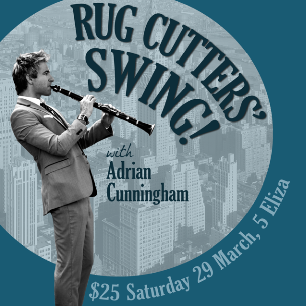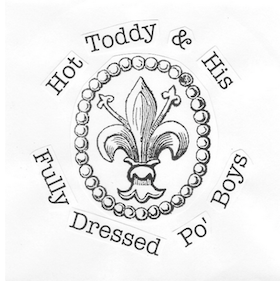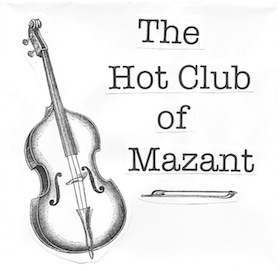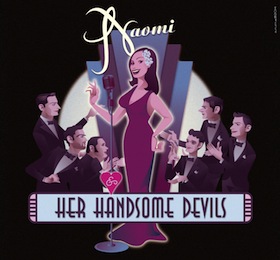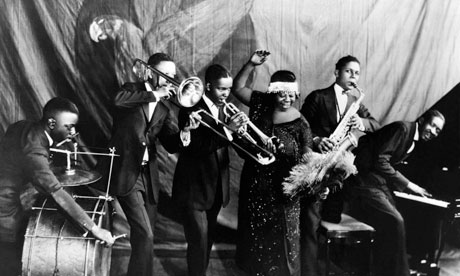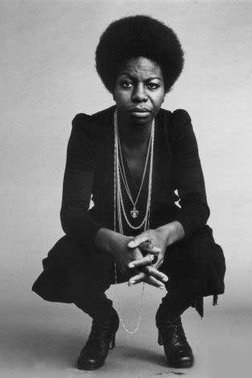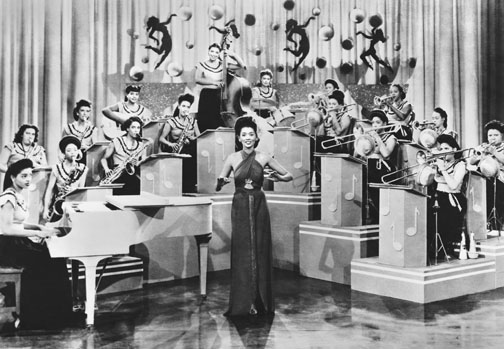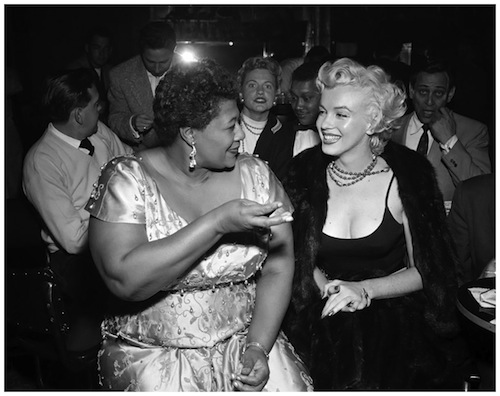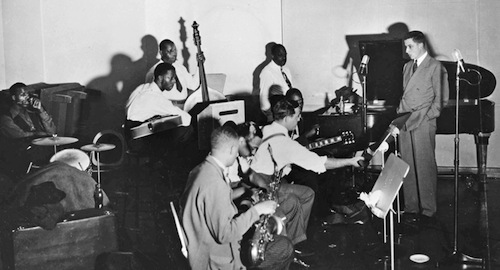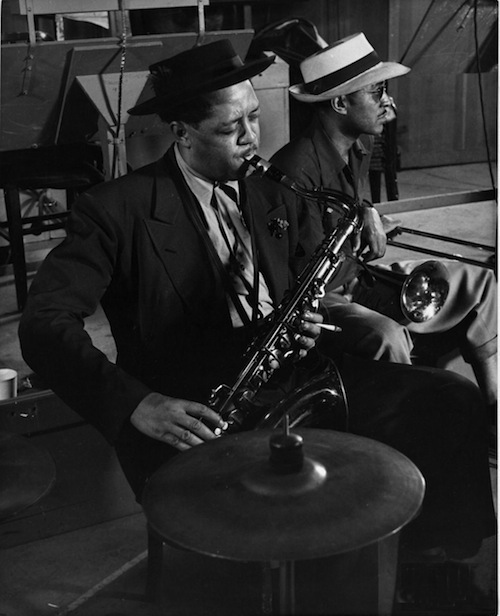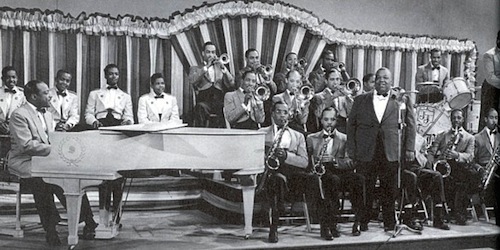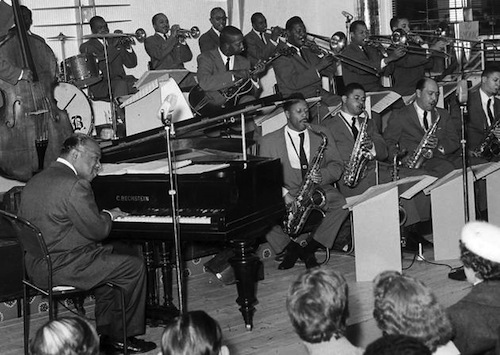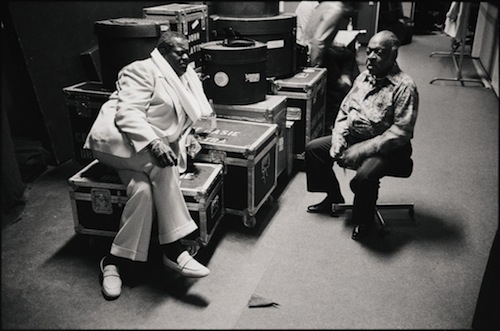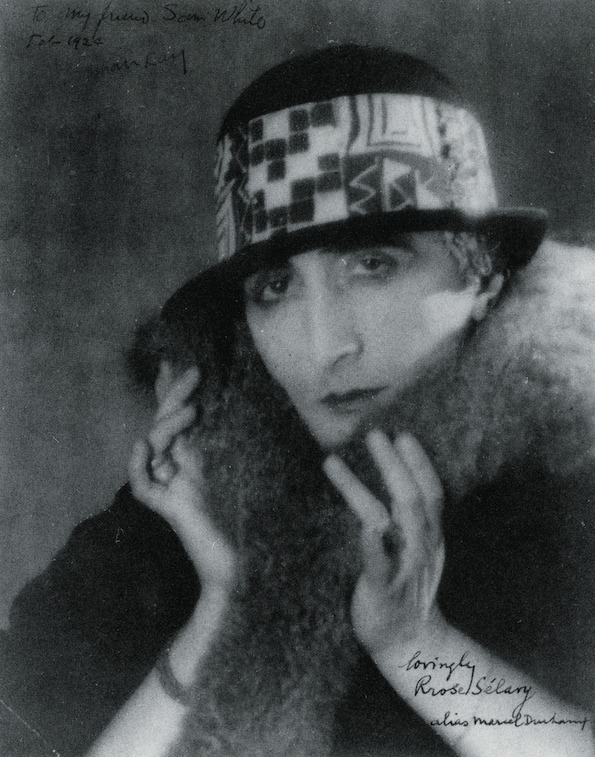[edit]Warning: this post is too long, rambles too much, and is generally quiet confusing. YOLO![/]
I talk and write a lot about ‘favourites’ and ‘safety songs’ in DJing, so I thought it was worth putting together a post about them. I’ll try to add some notes about musical style while I’m at it.
Let’s define some terms. What do I mean by favourites? Basically, we’re talking songs that a particular scene likes a bunch, and plays quite often. But I’d like to refine that definition. There are a body of songs which are favourites internationally, and make for good lindy hopping. There are of course favourites within local scenes, and we could use them to chart the local musical cultures of lindy hop, but that’s not the point of this piece.
Gee, this post isn’t off to a good start, is it. Sorry – later night last night, up dancing. Still dealing with the remnants of jet lag. Which seem to have removed all my inhibitions, raised my volume, and made it really difficult to spin without chucking up. So please excuse the clumsy writing in this post.
So, anyway. Favourites. I’ve written about this before, in my post overplayed awesome, but I want to refine it.
What’s the point of listing favourite songs?
In my city at the moment, new DJs are playing some pretty awful music. It’s not even rock and roll, let alone swing. There’s a lot of really terrible popular music being played at our regular DJed social dancing night. Our only regular social DJed night. So terrible it clears the floor, because people think it’s the ‘going home music’. I do not exaggerate. I don’t understand why they don’t just use the favourites that make lindy hoppers rock out. And yet, I do understand.
Most peeps get into DJing because they have music they want to play. And most of us have music we want to play because we never hear anyone else play it. Most of us figure out after a few months that there’s a really good reason no one plays ‘Take Five’. Those reasons range from the fact that some songs just don’t make for good lindy hop, to more complex cultural and social reasons. If you want to stay on the regular DJing roster, you need to keep your music within the range of your local community’s norms. Otherwise you clear the floor, and you don’t get another gig. Those norms might change, and you might be a part of that change, but you can’t rush things. Not really.
This point is really a bit of a response to the DJ session at Herräng, where some of the guest DJs insisted that you have to play ‘great music’, and to a certain extent, challenge the dancers. I think that you can get away with this approach at larger events, particularly if you are a ‘rock star DJ’. But when you’re playing a weekly gig, every week (or trying to get onto the roster), you need to be a little more circumspect. It’s not so much about the music, as about becoming enculturated, and learning how to work with the organisers, the scene culture, and the event’s vibe. These are all professional skills: knowing how to play for a specific crowd, how to work with organisers to make them happy, and how to compromise.
It is utterly frustrating to have to play poop music when you start DJing. Or rather, to play music you don’t like. But a degree of compromise is important. When I started DJing, Melbourne was fully into supergroove, rnb and neo. It was killing me. Which was why I started DJing. But I couldn’t just come into the scene playing a set full of old scratchies. I had exactly zero DJing skills: I couldn’t work the sound gear, I didn’t know how to work a crowd. I’d practiced using my laptop, and transitioning, but I wasn’t terribly great.
This is the first set I played:
(title bpm artist year album)
Knock Me A Kiss 115 Louis Jordan 1943 Swingers
Let’s Call The Whole Thing Off 120 Ella Fitzgerald, Louis Armstrong, Oscar Peterson, Herb Ellis, Ray Brown, Louie Bellson 1957 Ella And Louis Again [MFSL]
Cow Cow Boogie 120 Jennie Löbel and Swing Kings 2001 He Ain’t Got Rhythm
Splanky 125 Count Basie and his Orchestra 1957 The Complete Atomic Basie
Shoo-Fly Pie and Apple Pan Dowdy 126 Stan Kenton and his Orchestra with June Christy 1945 The Best Of Big Band – Swinging The Blues
Is You Is Or Is You Ain’t My Baby? 140 Dinah Washington 1956 The Swingin’ Miss “D”
Moten Swing 138 Oscar Peterson 1962 Night Train
Out South 129 Junior Mance Trio 1962 Happy Time
Good Rockin’ Tonight 155 Jimmy Witherspoon 1963 Jazz Me Blues: the Best of Jimmy Witherspoon
Now Or Never 167 Katharine Whalen 1999 Jazz Squad
Big Fine Daddy 125 Lavay Smith and her Red Hot Skillet Lickers 2000 Everybody’s Talkin’ ‘Bout Miss Thing
Hey! Ba-Ba-Re-Bop 136 Lionel Hampton and his Orchestra 1945 Lionel Hampton Story 3: Hey! Ba-Ba-Re-Bop
For Dancers Only 148 Jimmie Lunceford and his Orchestra 1937 Swingsation – Jimmie Lunceford
C-Jam Blues 143 Lincoln Centre Jazz Orchestra with Wynton Marsalis 1999 Live In Swing City: Swingin’ With Duke
Don’t Falter At The Altar 138 Cab Calloway and his Orchestra Are You Hep To The Jive?
Apollo Jump 143 Lucky Millinder and his Orchestra 1943 Apollo Jump
Shoutin’ Blues 148 Count Basie and his Orchestra 1949 Kansas City Powerhouse
Comes Love 105 Billie Holiday and her Orchestra (Harry ‘Sweets’ Edison, Ben Webster, Jimmy Rowles, Barney Kessel, Joe Mondragon, Alvin Stoller) 1957 Body And Soul
My Handy Man Ain’t Handy No More 76 Alberta Hunter (acc by Doc Cheatham, Vic Dickenson, Fran Wess, Norris Turney, Billy Butler, Gerald Cook, Aaron Bell, Jackie Williams) 1978 Amtrak Blues
Salty Papa Blues 115 Lionel Hampton and his Septet with Dinah Washington 1943 Dinah Washington:the Queen Sings – Disc 1 – Evil Gal Blues
Drinkin’ Wine Spo-Dee-O-Dee 130 Lionel Hampton and his Orchestra 1949 Lionel Hampton Story 4: Midnight Sun
Drum Boogie 176 Gene Krupa Drums Drums Drums
Looking at this set now, I never play half these songs any more. The tempos are painfully slow, but at the time I was actually pushing the dancers. The average bpm in Melbourne in 2006 was about 120bpm. Kill me now. I was back from Herräng (well, a year or so back), and utterly frustrated with Melbourne music. There were some truly fabulous DJs around (Brian Renehan was really, really great), but they rarely DJed. I just wanted to hear some olden days music.
I remember my strategy with this set was to play a mix: stuff I wanted to hear, stuff dancers already loved, and stuff we could both compromise on.
Looking at the set now, the transitions are actually pretty good – little clumps of musical styles easing into other styles – the bpm transitions are ok (god, it’s so SLOW), and the songs are ok. But that Junior Mance/Oscar Peterson combo. Sheesh. Looking at the set, I actually played 15 minutes over time, which I think mean that dancers liked it. I remember the DJ coordinator was happy. I also remember I was really, really nervous, and that I had Brian come in and help me set up, then give me feedback during the set so I could avoid major fuck ups.
The most important part, though, is that I combined favourites (for the scene at that time) with songs I wanted to hear. So you get that Mance/Peterson combo, but you also get Hampton, Lunceford, Millinder, Basie, and Calloway. There’s old scratch, and there’s hi-fi. There’s supergroove, and there’s solid big band swing.
More importantly, I used songs that I now thing of as ‘safety songs’ – songs that work with any lindy hop crowd, anywhere in the world. ‘C Jam Blues’ by LCJO: ultimate safety song. Basie’s ‘Splanky’. They just don’t get old. They make for great lindy hop, even if they are a little slow. I think that Frankie’s influence is important here: Frankie insisted that big band swing was great for lindy hop, and ‘Splanky’ is an examplar of that later era of Frankie’s dancing: new testament Basie at a slowish tempo, but with lots of juicy musicianship and a feeling of energy or momentum. Perfect for older gentlemen with bung hips and a formidable understanding of music.
Here’s my key point: there’s a difference between a ‘safety song’ and a ‘favourite’. Favourites can be locally specific, and if you don’t DJ or dance in a scene regularly, there’s no way you can know what they are. It’s local knowledge, and where local DJs have the edge on out of towners. But ‘safety songs’ tend to be international favourites: songs with longevity, international appeal, and guaranteed to work with any lindy hopping crowd, anywhere.
There are some provisos here. You can’t really play a set of all pre-1950 music to a crowd who never hear or dance to this stuff. But you can stuff a set with a combination of things like Splanky and C Jam Blues and those old scratchies. The hi-fi stuff will be your ‘safety songs’ that you sprinkle in between the scratchies. Kind of an apology or moment of comfort for dancers.
I think that this is where my approach to DJing differs from the ‘challenge dancers’ approach. My general philosophy is: make it easy for people to have fun (I did a DJ workshop on this, and you can read my notes here.) I’m not interested in challenging people. I want to make it really easy for people to have a good time. As my partner Dave says, “Play songs people like.” Why would you play a set stuffed full with songs nobody on the dance floor likes? We’re social dancing here! Be social! If you do have a mission to shift your scene’s musical tastes, be stealth about it. And then give yourself a good talking to for being such a sanctimonious dick: you are not the goddamn DJing messiah.
I know I had to get a grip on myself after I started DJing. Yes, it was awful to be living in a scene with no big band music in the DJs’ sets. Yes, the scene’s dancing did improve massively when the music improved. But it was utterly arrogant to assume that I could be the person to effect those changes. And when I got over myself, my DJing actually improved.
I think it’s much healthier (for everyone involved, especially the DJ, who needs to get a clue) to approach DJing as a chance to share songs you love with people, and to try to make your sets one part of a bloody good night of dancing and socialising. As a DJ, you are host at the party: you set out the snacks, you welcome people arriving, you replenish the beer, you turn on the air conditioning, and you make sure shy people feel welcome. You want everyone to have a good time. And you want to have a good time doing it.
You don’t tell people what to talk about, you don’t try to match-make, you don’t micromanage individual conversations. You just set up the party and then nudge it every now and then. If peeps want a quiet night of conversation, then that’s what you do. If they want to tear their shirts off and dance on tables, then you go with that. You can’t tell them what to feel, you can only help them feel more feels. The thing about lindy hop, is that the feels you usually feel (and arrive expecting to feel) are happy feels. If you want something more complex, you go blues dancing :D
Geeps, I’ve totally gotten off track there. Favourites!
What’s the point of me listing them? If you’re a beginner DJ, you should get yourself a copy of all these songs, and then learn to DJ with them. One thing that came out of that DJ session at Herräng was the point that the backbone of a good DJ’s work is the music they play. But what makes a DJ unique is how they combine those songs. We’re all drawing on the same pool of music, and nothing is new. But a great DJ puts these songs together in a fun and new way.
I have a personal rule: I don’t play songs I hate. I tried that, and I ended up hating DJing, resenting the dancers, and basically doing the DJing equivalent of a crywank. I was making the dancers happy, I was getting the props, but I wasn’t happy. I only play songs I love. I only play songs that make me want to dance like a fool.
To be sure that I’m actually DJing songs that make for good lindy hop (or charleston or whatever), I work on my own dancing. I take classes, I practice, I continually work to push my own dancing. Because if I can’t dance fast (for example), I have no idea whether a faster song would be great for lindy hop. I also dance with beginner dancers, experienced dancers, great dancers. I also try to DJ for a whole range of dancers as well. Because all these people experience music in different ways, and their abilities, experiences and sheer physical experience of the music will shape their perception of the music. And dancing with them helps me figure out what all that experience and perception is.
And when I DJ, I watch them: I am paying very close attention to what they’re feeling and doing. Which is why I don’t dance during my set: I can’t give the dancers enough attention if I’m all up in my own business on the dance floor. And it was a relief and absolute joy to hear the other Herräng DJs say this, unequivocably: you don’t dance during your set. It was really the case that all these experienced DJs just took it as granted that you can’t DJ well if you’re also dancing. And in my experience, it’s true. The only DJ I’ve seen pull it off well is Falty, and he’s an aberration.
Yeah yeah. FAVOURITES, mate, FAVOURITES.
Here is a sub-set of my list of songs I consider ‘favourites’ and ‘safety songs’. The longer I DJ, the longer this list gets, and this is just a smaller group of that larger list. So please don’t consider it exhaustive. It’s also catering largely to my experiences DJing regularly in Sydney and Melbourne, and within Australia generally, so it’s probably quite locally specific.
(title – artist – bpm – year – album – length – grouping – comments)
Jumpin’ At The Woodside – Count Basie and his Orchestra – 235 – 1939 – The Complete Decca Recordings (disc 02) – 3:10 – 1930s kansas big instrumental – best good fast; ok quality
Quality Shout – Vince Giordano and his Nighthawks Orchestra – 232 – 1993 Quality Shout – 3:03 – hi-fi 1920s big instrumental – good starter excellent charleston
Algiers Stomp – Mills Blue Rhythm Band (Lucky Millinder, Henry ‘Red’ Allen, J.C. Higgenbotham, George Washington, Edgar Hayes) – 219 – 1936 – Mills Blue Rhythm Band: Harlem Heat – 3:08 – 1930s hot big instrumental – upenergy fun
Let’s Get Together – Chick Webb and his Orchestra – 209 – 1934 – Stomping At The Savoy (disc 1): Don’t Be That Way – 3:05 – 1930s big instrumental – best excellent upenergy
Flying Home – Lionel Hampton and his Orchestra – 197 – 1942 – Lionel Hampton Story 2: Flying Home – 3:11 – 1940s big instrumental – best faster
Mr. Ghost Goes To Town – Mills Blue Rhythm Band (Lucky Millinder, Henry ‘Red’ Allen, J.C. Higgenbotham, George Washington, Edgar Hayes) – 192 – 1936 – Mills Blue Rhythm Band: 1933-1936 – 3:24 – 1930s hot big instrumental – upenergy fun
Rockin’ In Rhythm – Take 2 – The Jungle Band with Duke Ellington – 190 – 1931 – The Duke Ellington Centennial Edition: Complete RCA Victor Recordings (disc 05) – 2:53 – 1930s hot big instrumental – best mediumenergy
Who Ya Hunchin’? – Chick Webb and his Orchestra – 186 – 1938 – Stomping At The Savoy (disc 4): Spinnin’ the Web – 2:49 – 1930s big instrumental – upenergy okquality
Roll ‘Em – Benny Goodman and his Orchestra – 180 – 1937 – The King Of Swing – 3:15 – 1930s big instrumental – upenergy
Madame Dynamite Eddie Condon and his Orchestra (Pee Wee Russell, Eddie Condon, Sidney Catlett) – 176 – 1933 – Eddie Condon: Classic Sessions 1927-49 (Volume 2) – 2:56 – 1930s chicago hot small instrumental – upenergy fun
King Porter Stomp – Kansas City Band – 170 – 1997 – KC After Dark – 4:38 – hi-fi kansas big instrumental live – upenergy
Savoy – Lucky Millinder and his Orchestra (Trevor Bacon) – 166 – 1942 – Anthology Of Big Band Swing (Disc 2) – 3:05 – 1940s big male vocal – best upenergy
Till Tom Special – Lionel Hampton and his Orchestra (Ziggy Elman, Toots Mondello, Buff Estes, Jerry Jerome, Budd Johnson, Spencer Odom, Ernest Ashley, Artie Bernstein, Nick Fatool) – 164 – 1940 – The Complete Lionel Hampton Victor Sessions 1937-1941 (Mosaic disc 04) – 3:23 – 1940s big instrumental – excellent upenergy
Sent For You Yesterday Count Basie and his Orchestra (Joe Williams) – 163 – 1960 – The Count Basie Story (Disc 2) – 3:10 – 1960s hi-fi kansas big male – hifi upenergy
Jump Session – Vout, Jam and Jive (Slim Gaillard, Bam Brown, Kenneth Hollon) – 162 – 1938 – Slim and Slam 1938-1939 – 2:36 – 1930s small male vocal live – New York August 17 1938
Stompin’ At The Savoy – Jimmy Dorsey and his Orchestra – 162 – 1936 – Swingsation: Charlie Barnet and Jimmy Dorsey – 3:12 – 1930s big instrumental – mediumenergy
I’se A Muggin’ – Stuff Smith and his Onyx Club Boys (Jonah Jones, Raymond Smith, Bobby Bennett, Mack Walker, John Washington) – 161 – 1936 – Stuff Smith: Complete Jazz Series 1936 – 1939 – 3:14 – 1930s small male vocal – mediumenergy fun NY 11 february 1936
You’re Driving Me Crazy – Big Joe Turner, Jimmy Nottingham, Lawrence Brown, Pete Brown, Seldon Powell, Pete Johnson, Freddie Green, Walter Page, Cliff Leeman – 161 – 1956 – The Boss Of The Blues – 4:14 – 1950s Kansas small male shouter – upenergy great (Moten Swing riff)
Good Queen Bess – Johnny Hodges and his Orchestra (Cootie Williams, Lawrence Brown, Harry Carney, Duke Ellington, Jimmy Blanton, Sonny Greer) – 160 – 1940 – The Duke Ellington Centennial Edition: Complete RCA Victor Recordings (disc 10) – 3:00 – 1940s big instrumental – best great medium okquality
Bearcat Shuffle – Andy Kirk and his Twelve Clouds of Joy (Mary Lou Williams) – 160 – 1936 – The Lady Who Swings the Band – Mary Lou Williams with Any Kirk and his Clouds of Joy – 3:01 – 1930s big instrumental – upenergy
Are You Hep To The Jive? – Cab Calloway and his Orchestra (Chu Berry) – 159 – 1940 – Classic Chu Berry Columbia And Victor Sessions (Mosaic disc 07) – 2:52 – 1940s big male vocal – upenergy fun
Flyin’ Home – Lionel Hampton and his Orchestra (Ziggy Elman, Toots Mondello, Buff Estes, Jerry Jerome, Budd Johnson, Spencer Odom, Ernest Ashley, Artie Bernstein, Nick Fatool) 158 1940 The Complete Lionel Hampton Victor Sessions 1937-1941 (Mosaic disc 04) 2:59 1940s big instrumental excellent mediumenergy slower version
Ballin’ The Jack – Bunk Johnson’s V-Disc Veterans – 156 – 1944 – Bunk And The New Orleans Revival 1942-1945 – 2:45 – 1940s new orleans revival – small female vocal live – mediumenergy
Just Kiddin’ Around – Artie Shaw and his Orchestra (Oran Hot Lips Page, Johnny Guarnieri, Dave Tough) – 155 – 1941 – Self Portrait (Disc 3) – 3:21 – 1940s big instrumental – great upenergy
Jump Through The Window – Roy Eldridge and his Orchestra (Zutty Singleton) – 154 1943 – After You’ve Gone – 2:42 – 1940s big instrumental – upenergy
A Viper’s Moan – Willie Bryant and his Orchestra (Teddy Wilson, Cozy Cole) – 153 – 1935 – Willie Bryant: Chronological Classics 1935-1936 – 3:26 – 1930s big instrumental – upenergy
Shufflin’ And Rollin’ – Buddy Johnson and his Orchestra – 153 – 1952 – Walk ‘Em – 3:12 – 1950s big instrumental – upenergy
The Back Room Romp (A Contrapuntal Stomp) – Rex Stewart and his 52nd Street Stompers (Lawrence Brown, Johnny Hodges, Harry Carney, Duke Ellington, Brick Fleagle, Billy Taylor, Jack Maisel) – 152 – 1937 – The Duke’s Men: Small Groups Vol. 1 (Disc 2) – 2:49 – 1930s small instrumental – best upenergy fun
I Want The Waiter (with the water) – Jimmie Lunceford and his Orchestra – 151 – 1939 – Lunceford Special 1939-40 – 2:44 – 1930s big male vocal – excellent mediumenergy
For Dancers Only Jimmie Lunceford and his Orchestra 148 1937 Swingsation – Jimmie Lunceford 2:41 1940s big instrumental best upenergy favourite
Massachusetts – Maxine Sullivan With Buster Bailey, Milt Hinton, Jerome Richardson, Osie Johnson, Dick Hyman, Wendell Marshall – 147 – 1956 – A Tribute To Andy Razaf – 3:19 – 1950s small female vocal – upenergy great
Knock Me A Kiss – Louis Jordan – 147 – The Very Best Of Louis Jordan – 2:19 – 1940s – small male vocal – medenergy okquality favourite
Jive At Five – Count Basie and his Orchestra – 147 – 1960 – The Count Basie Story (Disc 1) – 3:03 – 1960s hi-fi kansas big instrumental – NT mediumenergy favourite
Cole Slaw – Jesse Stone and His Orchestra – 145 – Original Swingers: Hipsters, Zoots and Wingtips vol 2 – 2:57 – 1940s big male vocal – fun upenergy favourite clap
Blues In Hoss’s Flat – Count Basie and his Orchestra – 144 – 1958 – Chairman Of The Board [Bonus Tracks] – 3:13 – 1950s hi-fi kansas big instrumental – best upenergy
Apollo Jump – Lucky Millinder and his Orchestra – 143 – 1943 – Apollo Jump – 3:27 – 1930s big instrumental – excellent upenergy
C-Jam Blues – Lincoln Centre Jazz Orchestra with Wynton Marsalis – 143 – 1999 – Live In Swing City: Swingin’ With Duke – 3:34 – hi-fi 1930s big instrumental – excellent upenergy favourite
All That Meat And No Potatoes – Fats Waller and His Rhythm (John Hamilton, Gene Sedric, Al Casey, Cedric Wallace, Slick Jones) – 143 – 1941 – The Last Years (1940-1943) (disc 02) – 2:47 – 1940s hot small male vocal – mediumenergy NY 20 Mar 1941
Royal Family – Jonathan Stout and his Campus Five – 142 – 2007 – Moppin’ And Boppin’ – 3:14 – hi-fi small – mediumenergy
Blues My Naughty Sweetie – Sidney Bechet and his Hot Six – 140 – 1951 – The Blue Note Years – 5:44 – 1950s new orleans revival small instrumental – mediumenergy favourite
Shout, Sister, Shout – Lucky Millinder and his Orchestra (Sister Rosetta Tharpe, Buster Bailey) – 140 – 1941 – Apollo Jump – 2:45 – 1940s big female vocal mediumenergy favourite
Solid as a Rock – Count Basie and his Orchestra with The Deep River Boys – 140 1950 – Count Basie and His Orchestra 1950-1951 – 3:04 – 1940s big male vocal – upenergy favourite
Don’t Falter At The Altar – Cab Calloway and his Orchestra – 138 – Are You Hep To The Jive? – 2:44 – 1940s big male vocal – excellent medium tempo dancing
Blues For Smedley – Clark Terry, Ed Thigpen, Oscar Peterson, Ray Brown – 137 – 1964 – Oscar Peterson Trio + One: Clark Terry – 6:57 – 1960s hi-fi small instrumental – mediumenergy
Drinkin’ Wine, Spo-Dee-O-Dee – Lionel Hampton and his Orchestra with Sonny Parker – 134 – 1949 – Hamp: The Legendary Decca Recordings – 3:24 – 1940s big male vocal – best upenergy clap
[Gettin’ Much Lately?] Ain’t Nothin’ To It – Fats Waller, his Rhythm and his Orchestra (John Hamilton, Bob Williams, Herman Autrey, Geoge Wilson, Ray Hogan, Jimmy Powell, Dave McRae, Gene Sedric, Bob Carroll, Al Casey, Cedric Wallace, Slick Jones) – 134 – 1941 – The Last Years (1940-1943) (disc 02) – 3:10 – 1940s hot big male vocal – mediumenergy Hollywood 1 Jul 1941
Easy Does It – Big Eighteen (Billy Butterfield, Buck Clayton, Charlie Shavers, Rex Stewart, Lawrence Brown, Vic Dickenson, Lou McGarity, Dicky Wells, Walt Levinksy, Hymie Schertzer, Sam Donahue, Boomie Richman, Ernie Caceres, Johnny Guarnieri, Barry Galbraith, Milt ) – 129 – 1958 – Echoes of the Swinging Bands – 5:14 – hi-fi big instrumental – mediumenergy
Bli-Blip – Ella Fitzgerald – 128 – 1957 – The Complete Song Books (Disc 07) Duke Ellington Vol. 3 – 3:05 – 1950s hi-fi big female vocal – best mediumenergy favourite
Summit Ridge Drive – Artie Shaw and his Gramercy Five (Billy Butterfield, Johnny Guarnieri, Al Hendrickson, Jud DeNaut, Nick Fatool) – 128 – 1940 – Self Portrait (Disc 2) – 3:21 – 1940s small instrumental – upenergy great
B-Sharp Boston – Duke Ellington and his Orchestra – 126 – 1949 – Duke Ellington and his Orchestra: 1949-1950 – 2:55 – 1940s big instrumental – mediumenergy
Shiny Stockings – Count Basie and his Orchestra – 126 – 1956 – Complete Clef/Verve Count Basie Fifties Studio Recordings (Mosaic disc 06) – 5:17 – 1950s hi-fi kansas big instrumental – mediumenergy
Splanky Count Basie and his Orchestra – 125 – 1957 – The Complete Atomic Basie – 3:36 – 1950s hi-fi big instrumental – NT best mediumenergy
My Baby Just Cares For Me – Nina Simone – 120 – The Great Nina Simone – 3:38 – hi-fi small female vocal – best mediumenergy
As you can see, I cover quite a few styles and eras there. I use these songs in different moments, for different effects. ‘Blues for Smedley’, for example, is solid supergroove. It has a fabulous muted trumpet intro, and it’s lots of fun to dance to. I usually play it later at night, after I’ve pumped the energy up really high, and am giving the dancers a rest, or wanting to build up again after a rest. It’s a chilled out song, that’s a bit more rhythmically complex. But it still trucks along with good energy. It’s a good wee break song too :D But I probably wouldn’t play it in a shorter weekly gig, as it’s just too long, and I don’t like to lean on supergroove. There’s also a massive bass solo in the middle that some newer dancers don’t especially dig. But I play it because that bass solo is actually fantastic. And this is a really good example of really good supergroove.
You might have noticed the terms ‘mediumenergy’ and ‘upenergy’ in there. These are key search terms for me, as I tend to DJ an ‘energy wave’, working the energy in the room up and down waves. This is probably the thing I think most about when I’m DJing: how much energy is there in the room? Are they crazy wild? Are they chilled and calm? Do they need a little emotional rest? I think energy is more important than tempo, particularly when dancers get some stamina and experience.
People generally are only picky about tempo when their teachers have told them tempo is a big deal (or haven’t ever played faster songs in class), or their local DJs don’t ever play a range of tempos. I think we should be able to dance to ALL the tempos, from super slow to super fast. And if peeps can’t dance fast, then their teachers haven’t explained to them that you can dance half time, or can dance a simple rhythm: you don’t have to lay it out in badarse swingouts at 200bpm. You can just chill. A discomfort with higher tempos is a mental block, not a physical one: brand new dancers are generally (in my DJing experience) totally fine with rocking out to 250bpm. They’re all over the place, they get exhausted, but they have fuckloads of fun. Unless someone has told them ‘fast is hard’. I find the pickiest dancers are the more (but not most) experienced, and they can be a total pain in the arse.
I’ve also included my ‘grouping’ tags in this list. You can read more about them in my post Herräng report part 2: organising my music collection for DJing. There are quite a few vocals in there (which are often a good way to work with newer dancers, who aren’t used to instrumentals in big numbers), but I absolutely lean on instrumentals. I know that some DJs consciously combine vocals and instrumental songs, keeping tab on the ratio, but I tend not to. To me, a good trumpet riff is as effective as a vocal line. I mean, we can all sing the melody to ‘Flying Home’, right, and there’s no vocal there. Same goes for the Big Eighteen’s version of ‘Easy Does It’. Worst ear worm song ever. And there’re no vocals.
Other things that make for a good favourite:
Energy. ‘upenergy’ songs are often popular. Because lindy hop is an upenergy dance.
Clapping. I don’t have ‘Lavender Coffin’ in this list, though I should. Lionel Hampton understands about clapping, shouting and a good rolling rhythm line. You can play ‘Lavender Coffin’, ‘Drinkin’ Wine, Spo-dee-o-do’, and ‘Hey Ba-ba-ree-bop’ all in a row, and dancers love it. They’re pretty much all the same song – same tempo, same energy, same simple vocals, clapping, shouting, etc. If you follow that up with ‘Cole Slaw’ (the Jesse Stone version), you’re rocking. But you will find the dancers aren’t ‘going’ anywhere: you’ve just served them up four bowls of potato chips, and they need something different to push them up the tempos or into a new vibe.
I use these songs to build energy, to prepare dancers for higher tempos. I usually follow up with something faster and more exciting. Or I use these songs to follow up a super fast song, or a bombed experiment. Lavender Coffin is my standard follow up to a jam: the high energy capitalises on the energy of the jam, but the lower tempos invite newer or less confident dancers onto the floor. The shouty, extended intro breaks the continuity of the jam, so that you disturb the flow of couples moving into and out of the circle, and break up the vibe so everyone can get onto the floor. And the call and response structure is a clear invitation to dancers:
Do you want to dance?
YEAH!
Every lindy hop set needs some Ella Fitzgerald. She’s one jazz artist most non-dancers know. And she did some fabulous stuff. I actually hate her shouty squawky scatting, so I NEVER play Honeysuckle Rose or her later stuff. ‘Bli Blip’ is a compromise. I actually have a few of her live recordings from the Savoy with Webb’s band after he died in my favourites list (‘St Louis Blues’ from 1939), because that band was shit hot, and she was a great band leader. And her vocals have moved away from that cutesy shit she did when she was younger, and into a more mature, kicking style. I do adore her stuff with Louis Armstrong, but I don’t DJ it that often, as it’s a bit slow.
Fats Waller is massively popular. It’s like he suddenly got huge with dancers when Frida and Skye did that ‘Twenty four robbers’ routine in 2007, and never left them. He makes for great dancing: funny, clever lyrics, great bands, moving from light and tinkly to hardcore shout choruses. Pretty predictable, and there is a bit of dross in his recordings, but there are also a LOT of fantastic songs there. I have about one million Waller songs in my favourites list. His slower stuff is perfect, though, and ‘All that Meat and No Potatoes’ is a guaranteed win. I actually love ‘Shortnin’ Bread’ most of all, but the perennial favourites is ‘Yacht Club Swing’. I play a couple of versions of ‘Fat and Greasy’ a lot at the moment, because it has lots of energy. ‘Moppin’ and Boppin” has a great intro that helps kick of a set, or signal a jump in energy.
If your favourites list doesn’t have a stack of Basie in it, you’re doing it wrong. The old timers said Basie’s band was THE business for lindy hopping. He’s pretty much perfect: a fat, solid rhythm section, simple structures, exciting energy, good musicians. He feels like meat and potato to me: good, solid lindy hopping fun. Not too cerebral, just crazy fun. And then in the 50s, his new testament stuff develops those themes: the rhythm section is still solid, but Basie’s piano is pared back, and even more a melodic contribution. The tempos shift a little, and the band gets further into the pocket (ie it feels ‘more swingy’ and less crazy). The band was phenomenal – there are some recordings of the 1930s/40s hits by the 50s/60s band (the ‘Count Basie Story’ album is a good example) that are just amazing: to hear that band in hi-fi, with so many years of experience launching into ‘Jumpin at the Woodside’, it just makes lindy hoppers wee their pants.
I adore Ellington. He had a strong association with dancers over the years, but he wasn’t a huge hit with lindy hoppers. But I play quite a lot of him, especially the smaller groups (because that’s my favourite music, ever). You have to think carefully about which songs work for which crowds, though, as he does wiggedy wack stuff with phrasing and timing. Choreographing to his songs can be a headache. But these challenges are what make him so much fun, especially for experienced dancers. The modern lindy hop movement has thirty years under its belt – longer than the original swing era – and dancers’ approach to music is consequently more diverse and often more complex. ‘B Sharp Boston’, ‘Back Room Romp’ and ‘Good Queen Bess’ are standards in my collection. Utterly overplayed. I love Ellington.
I don’t have any Tommy Dorsey or Charlie Barnet in this short list, but they’re also up there in my favourites, and I use them a lot. I’ve only included one Bechet song, but I use quite a few of his quite often. This song is a good example of New Orleans Revival stuff, and is massively overplayed everywhere. It’s also a good wee break song :D Nice moderate tempo, a good ‘story’ in the song (it starts simple, then builds in compexity, energy and interest).
Dancers love Jimmie Lunceford. I think of him as being fairly meat and potatoes – like Lionel Hampton, Chick Webb, and Count Basie. If you don’t have him in your collection, you’re doing lindy hop wrong. He does everything from calmer, accessible slower tempos to crazy-fast exciting stuff. Vocals, instrumentals, etc. Just great.
I use quite a lot of Andy Kirk, but have only one of his songs in this list. I love him. I love Mary Lou Williams. This is a great band.
I’m not a massive Chick Webb person. I know, I know, it’s a failing. But I’m also a bit cool on Sidney Bechet. I know, I KNOW! I think I need to buy more Webb so I can really get my head around him. But I don’t like that early Ella stuff much (though it was actually where my interest in jazz began!), and I can’t really get past that with Webb.
Ok, I have to end here. But there are 53 songs in this list of songs. That’s 2 hours of music. If you just played from this list, you’d be playing a cracking set. And this is just an edited down version of my favourites list (which is 170 songs/9 hours long).
As I finish off this post, I worry that I’m coming across as advocating (or establishing) a canon of ‘good dancing music’. I’m wary of this approach, because I think this sets up scary power dynamics and ideas about what constitutes ‘good’ music and good dancing. This list of ‘favourites’/’safety songs’ is very personal. It’s my list, developed through my own DJing and dancing experiences. Yes, I can say ‘you must have Basie in your collection’, and I think to some extent we have developed a musical canon in lindy hop. A canon set down by people like Frankie Manning and Norma Miller.
This is because we are, at heart a recreationist community. We are always looking backwards. But as the DJs said in that session, we can’t live in the past, because we are living now, in the 21st century, and we don’t want to live in the 1930s, because, generally, it was pretty shitty. The interesting, and powerful, thing about lindy hop culture today is that we can at once honour the past, and honour elders, and live now, in the present, with an eye to the future. Our community’s emphasis on pedagogy and (sometimes scary) expansionist ‘grow the scene’ imperative are part of our looking to the future. And I think that one of the strengths of lindy hop is that it is, at its heart, about innovation, change and adaptability. We value stealing steps, we value innovation and creativity, but we also value preservation and historical awareness. So we can at once have a list of ‘favourite songs’, but we can also add to this list.
One of the issues that came up in that DJ session at Herräng was when and how to play and value modern day bands. Some of the DJs really didn’t dig new bands. Some really did. I personally play a lot of music by modern day bands, who’re doing both recreationist and original work. I buy it because I want to support these bands, because these are the bands I hire for dance events, and dancing to live bands is the best. But I’m also trying to wean myself off playing so much modern music, because I think that the original recordings are without peer. I think that there really were moments of genius in the 20s, 30s, and 40s. But I’m not blind to its weaknesses: there were also some truly shithouse bands, and there are some really awful recordings of terrible performances.
So my (full) favourites list is a mix of recordings of jazz and swing from the 1920s to the present day. I DJ from all these eras, and I DJ from a range of styles. The challenge for me at Herräng was keeping to the camp’s mandate of prioritising big band classic swing recordings of the 1930s and 40s. I wanted to play across a broader field of swing and jazz music. But Herräng has a clear and specific goal: to preserve and recreate african american music of the swing and jazz eras. Frankie Manning and other lindy hoppers of the 30s and 40s are the guiding lights for this project. So the big band music of this period is the focus of all this creative work. And this is what makes Herräng special: it has that clear creative goal and preservationist mandate. And I was happy to work with that, because I value those things too. But if this was the only DJing gig I did, I’d get quite frustrated.
Remind me to talk more about the tension between this approach to DJed music at Herräng, the actual live bands they hire, and the musical projects of the teachers and dancers who attend the camp (especially in week 5). While a classic swinging big band might be Frankie’s ideal, the reality of making music today dictates the limits of a smaller band. It’s hard to get 15 people together to do disciplined big band music. We just don’t have the resources (financial, social, knowledge, cultural) to pull it off. So dancers are into making small band music.
There’s a strong NOLA influence there, because many of these dancers are living in NOLA, or working with musicians inspired by NOLA. And as anyone who takes a moment to find out, music in New Orleans today, and in the past, has been far more diverse than just a big lump of Louis Armstrong.
I did feel, at moments, in Herräng, that the dictates to DJs were not quite in accord with the live music I was hearing. Naomi Uyama’s band played music that was very much influenced by NOLA, and not quite as close to classic big band swing as the DJing was expected to be. Mostly because the band itself was made up of musicians who’d lived and/or worked in New Orleans or with NOLA bands. The pick-up bands playing in the wee hours, from about 5am, in the foyer at the Folkets Hus were largely NOLA inspired. And these bands felt the most ‘authentic’ to me – these were dancers picking up instruments and playing music in a casual, informal way.
Some of them were professional musicians as well, but there wasn’t the musician/dancer divide that we saw in the evening gigs: these musicians were dancers; this music was by dancers. And you could just sit and listen or stand and listen, or you could dance. Whereas the evening bands were really presented just for dancing: there was nowhere to sit, you couldn’t bring your drinks into the ballrooms. I felt the pub nights up at Heaven’s Kitchen were just as ‘real’: unamplified pick-up bands, where anyone was welcome to join in (well, within reason), and the emphasis in the tents was on talking, socialising, drinking and perhaps listening or singing along. If you didn’t want to listen, you moved to the back of the tent. If you did, you moved closer to the band. There was no dancing.
I know I’ve gotten off-track here, but I think that it’s important to address issues of ‘canon’, ‘authenticity’ and useability in music when we talk about ‘favourites’. I think this tension between ‘good music’ and ‘useable music’ is very interesting. I am fascinated by the way lindy hop culture defines ‘good’ by ‘danceability’. Those moments at the pub nights, and in the foyers in the early mornings, I think I saw an important piece that modern lindy hop culture has been missing: the juke joints and rent parties and jams in late night bars and homes and sheds that complimented the big ballroom gigs in the 20s, 30s, and 40s. These informal places were were musicians refined their crafts, playing music they wanted to play. This creative ‘play’ or extension was a necessary compliment to the big band gigs that paid bills and put food on the table. And we are making a dire mistake when we neglect them in our lindy hop cultures.

